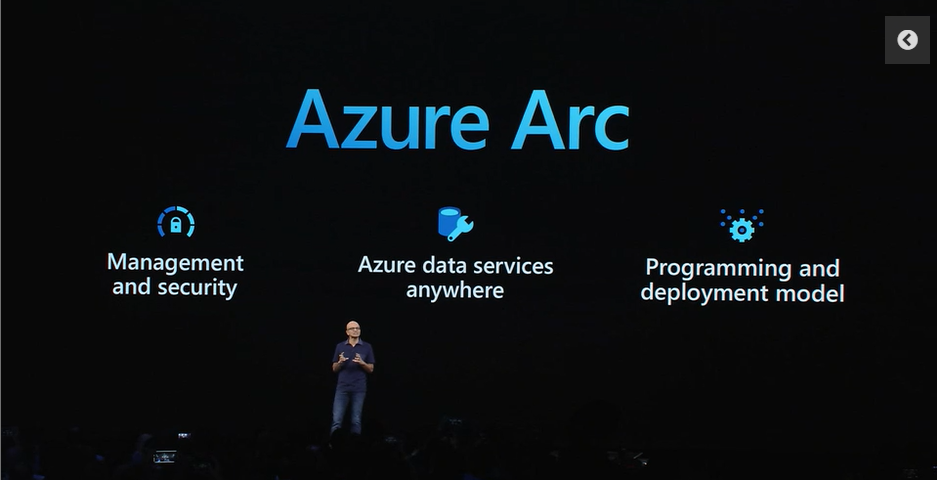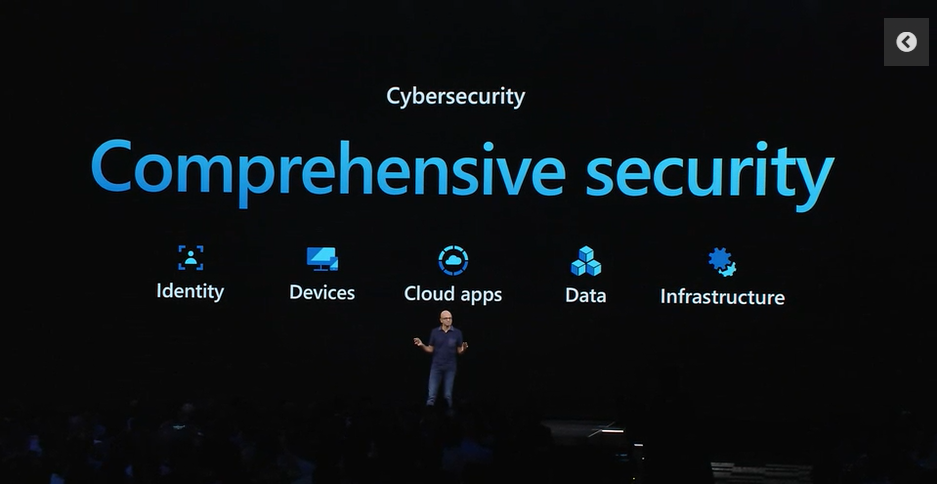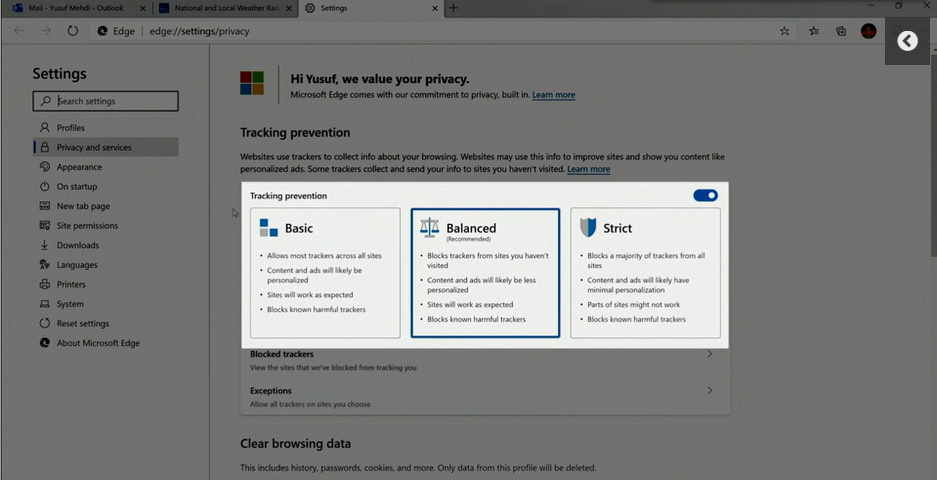#MSIgnite 2019 CliffNotes: Satya’s Tech Intensity Keynote Highlights

Need help managing your Office 365 tenant? Consider our free ebook “When to Use and How to Manage Microsoft Teams & Office 365 Groups.” Download here!
Read the rest of our Microsoft Ignite 2019 coverage:
- The New Features Coming to Yammer!
- Bill Bliss on Microsoft Teams Architecture
- Jeff Teper on the Latest Workplace Innovations
- Bill Bliss on Boosting Trust in Microsoft Teams Apps
- Dux Raymond Sy on Generational Diversity in the Modern Workplace
- Loryan Strant on Avoiding Office 365 Icebergs
- An Introduction to Yammer’s New Native Mode
- Office 365 Groups and Yammer Collaboration Tips
- The Structure of Private Channels in Microsoft Teams
- Tony Redmond on Microsoft Teams vs. Outlook
- 3 Ways Microsoft Teams Facilitates Inclusivity
Each year’s Ignite keynote offers an illuminating glimpse at what Microsoft has planned for the following year. Satya continued to harp on the importance of tech intensity this year through an extensive range of product and service innovations. Though you can watch the full presentation in video form, below we’ve compiled all the highlights in one convenient location. Enjoy!
Azure
Microsoft Azure was, understandably, a significant focus of this year’s Microsoft Ignite keynote. With 54 Azure regions worldwide and the proper certification accounted for, Microsoft’s cloud services have become a major focus for the company. Satya noted that Microsoft’s competitive advantage has been its consistent management control plan, an ideal development environment, and a powerful infrastructure stack. After showing off the full spectrum of Azure’s Intelligent Edge hardware portfolio, a couple new Azure innovations were introduced.

Azure Arc
Azure Arc is a control plane built for multi-cloud and multi-edge. It’ll support managed data services and will feature two open source projects that’ll allow users to build cloud-native distributed applications.
Azure Synapse
Synapse brings together data warehousing, big data analytics, and data integration. With it, unstructured and structured analytics can be brought together at an unprecedented scale. It was described as the next generation of the Azure SQL data warehouse, and will empower users by offering quick access and insight across all data. To showcase this, the on-stage demo displayed Azure Synapse executing a complex query through a petabyte of data in a matter of seconds.
Miss Satya's Ignite 2019 keynote? Check out the highlights here: Click To TweetAutonomous Systems
Another theme that permeated Satya’s keynote was the embrace of AI. He confirmed that Microsoft is interested in pursuing autonomous technology across industries. Towards this effort, they’re focusing on:
- Pushing the boundaries of reinforcement learning so capable AI engines can be built
- Machine teaching. Microsoft wants to enable engineers to teach AI engines. This way, AI engines can be driven by an engineer’s domain knowledge.
- Simulation environments. This is where the necessary synthetic data and machine teaching labels can be generated.
Trust
With the copious reports of data leaks and attacks over the last several years, being able to work securely is of the utmost importance. As such, Satya made sure to emphasize that Microsoft is working to enshrine trust as a human right in the systems they build. Though they’re focusing on AI, they’re also working to consider the ethics of AI and ensuring that there’s no bias built into it.
Additionally, Microsoft has focused on an end-to-end security architecture. This one integrated and consistent architecture can benefit from the strong ecosystem of support Microsoft is known for.

Developer Tools
Next was a demonstration of Microsoft’s commitment to having the best toolchain for developers. The tech giant claims that Visual Studio offers the best IDs out there in addition to achieving various language-related innovations. Additionally, Azure DevOps can help with build and deployment needs, and Github (only recently acquired last year) is the home for 40+ million open source developers and collaboration communities.
Microsoft showcased use cases for different types of visual studio applications (each linked below):
Visual Studio Use Cases
- Visual Studio Online: Can get the entire environment provisioned for you with all its dependencies right there just on a browser.
- Visual Studio IntelliCode: As you type your code, it pulls from Github to complete it.
- Visual Studio Live Share: Perfect for code review or collaboration when developing code with a team.
Power Platform
Two brand new members of the Power family were announced, including:
- Power Automate: Brings full robotic process automation to the platform.
- Power Virtual Agents: Brings full language understanding and conversational capabilities. Using TruGreen as an example, the Virtual Agent worked as a live chat solution to identify common issues customers might be having and pull from the company knowledge base to supply a solution. Customers can also schedule an appointment right from the live chat, and it’s fully customizable on the backend for different customer responses.

Microsoft 365: The World’s Productivity Cloud
As stated before, Microsoft wants to infuse AI into every experience. This means making PowerPoint presentations more efficient, data in Excel more actionable, videos more searchable, and Stream/Emails more accessible. Though the team at Microsoft highlighted 12 innovations across Microsoft 365 and Surface platforms, here are the five must-knows:
1. Project Cortex
Cortex combines the power of the Microsoft Graph with AI, people, content, and apps into an interactive knowledge repository for your organization. As demonstrated in the demo, this can be useful when you need to better understand a term or quickly access additional resources (e.g. presentations, videos, experts) related to a topic.
2. Audio Enhancement in Stream
Microsoft Stream’s new voice enhancement feature uses AI to remove background noise while recording, thus making it much easier to record while on the job.
3. Intelligent Content Capture
This is a smaller-scale innovation, but impressive nonetheless. When using a whiteboard to present during a Microsoft Teams meeting, the camera will be able to detect the edges of the whiteboard and naturally zoom in to make it easier for onlookers to see. It’ll even make anyone standing in front of the whiteboard translucent.
4. Natural Language Search in Outlook
We’ve all grown fairly accustomed to the convenience of voice-activated AI assistants like Siri and Alexa. Microsoft’s natural language search capabilities will allow for a similar experience in Outlook. Instead of trying to remember the one phrase to surface an email from months or years ago, users will be able to search by phrase, attachment, and more.
5. Image to Table
Another smaller-scale innovation, this technology will allow users to take a photo of a dataset and convert it into an Excel table. This should prove useful for those working with heaps of physical documents.
Lastly, I’d be remiss if I didn’t mention their quick Microsoft Teams spotlight. The collaboration platform has gradually taken the world by storm, and there are a host of exciting features on the docket. Improvements highlighted included the general availability of Private Channels, multi-window chats, and Yammer and Outlook integrations. Whether we’ll hear more about these throughout the conference remains to be seen.
The Future of the Web
To close out the keynote highlights, the Microsoft Edge team spotlighted a series of improvements to make the new Edge experience more competitive with other modern browsers like Google Chrome. Here’s a quick rundown of everything of note:
- It will be built on the Chromium engine
- Available for iOS, Android, Windows 7 and Windows 10
- It ships independently of the OS
- Rendering pages is over twice as fast as the old Edge
- The new Edge features perfect match compatibility on websites
- There are advanced & customizable security settings (pictured above)
- An InPrivate browsing option (Microsoft’s answer to Incognito) will prevent you from being accidentally logged in and won’t send any of your searches to the server
- Perhaps more impressive is the ability to ask search and ask questions about company resources directly from Bing. This includes things like company policies, employee contact information, and so on.
This is just the start. We’ll have plenty of Ignite session recaps throughout the conference and afterward, so be sure to check back often! And lastly, click here if you want to see the full version of this session.
Want to keep up with the rest of our Microsoft Ignite coverage? Subscribe to our blog!
As the former Content Marketing Specialist for AvePoint, Brent led the strategy and direction of all AvePoint's blog properties.




